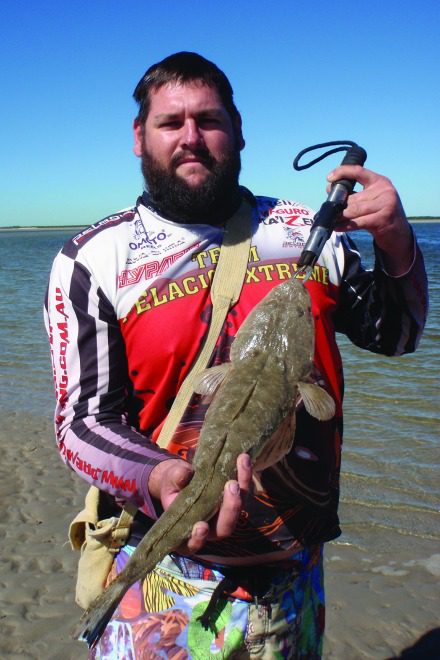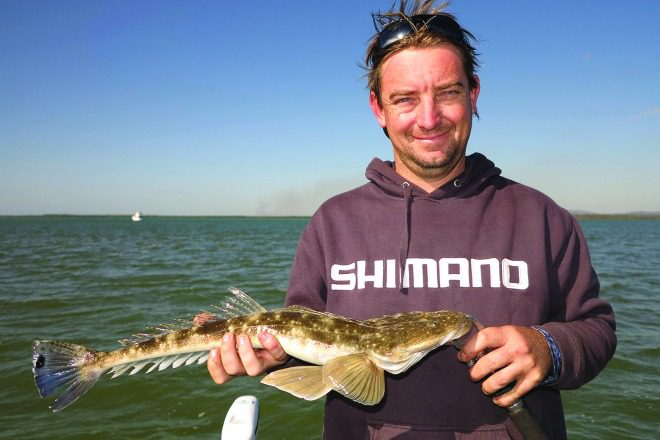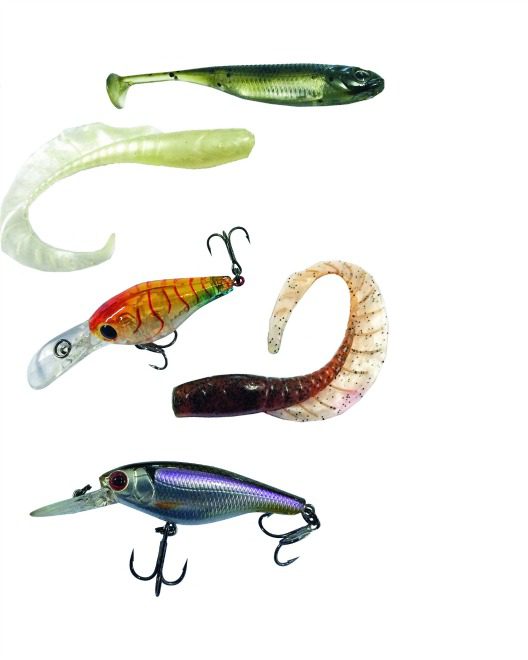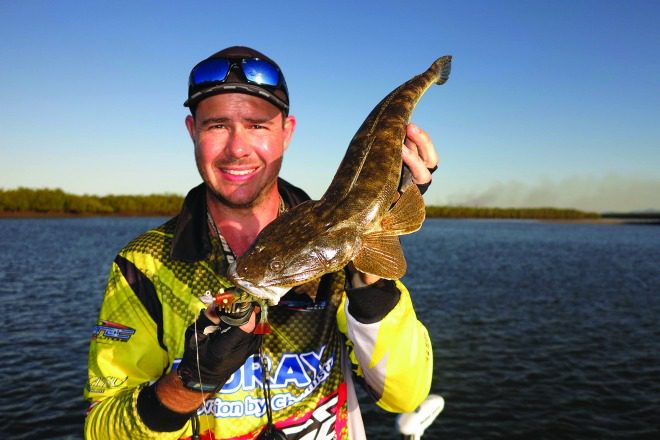THE water in our local systems also becomes much cleaner and we can start to confidently target species such as flathead, both dusky and bar-tailed, and cracker pikey and yellowfin bream.
Bait fishing is very effective for snaring a few fish but I find casting a lure is an awesome way to cover a fair bit of water in pursuit of light gear fun, especially for flathead and bream. One thing a lot of people like about chasing these species is it’s not imperative to own a boat. Plenty of flatties and bream are caught by walking the banks of local estuaries and casting lures as you move along the banks.
You can keep things pretty simple when chasing flatties and bream. In my opinion, the lighter your gear, the better.
A small spin reel of 1000-2500 size and a light 1-3kg or 2-4kg 6’6” or 7’ rod is ample. Your reel needs only to be spooled with 4-10lb braid and a decent length of good-quality leader material. For flathead I will use up to 12lb leader but prefer to use 8-10lb.
If mainly chasing bream I will go as light as possible and use 4lb braid and 4lb leader, which makes for a lot of fun when bigger fish smash your lures near snags. As with most avid lure fishers, I simply can’t choose a couple of lures to throw around; I need to have lots of different ones… just in case.
When targeting flathead I mainly use soft plastics so I can remain in constant contact with the bottom, disturbing as much sand as possible on the retrieve to try to trigger a bite. It pays to change up how you retrieve the plastic until the most effective one is found. From hop, hop, pause… hop, hop, pause, to a quick three winds and stop, flathead will find all sorts of retrieves interesting, but generally they prefer a specific retrieve on a particular day.
When chasing flatties, I usually fish the outgoing tide. On the first of the falling tide I target the top edges of yabby beds where the fish feed when the water is high. As the tide recedes I concentrate on where the water runs off the tops of the yabby beds and banks and into drains in the main creek.
Flathead will sit here with their heads up in the current waiting for baitfish and prawns to come off the flats and banks. It’s not uncommon to see flathead in less than 15cm of water waiting for the last of the bait to nervously swim into the feeder drains.
Be aware of the different size limits for flathead in our Queensland estuary systems. Dusky and bar-tailed flathead are the most common in our area. Dusky flathead have a minimum size of 40cm and a maximum of 75cm, while bar-tails have a minimum size of 30cm. Both these species have a bag limit of five.
The easiest way to tell them apart is the markings on their tails. Check the Fisheries Queensland website (daf.qld.gov.au/fisheries) for detailed images.




 Bush 'n Beach Fishing Magazine Location reports & tips for fishing, boating, camping, kayaking, 4WDing in Queensland and Northern NSW
Bush 'n Beach Fishing Magazine Location reports & tips for fishing, boating, camping, kayaking, 4WDing in Queensland and Northern NSW








